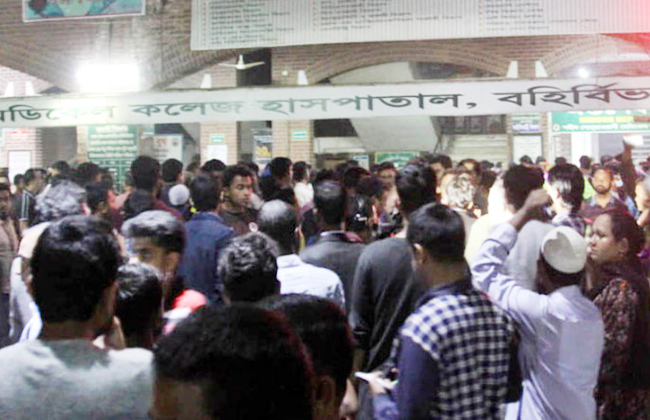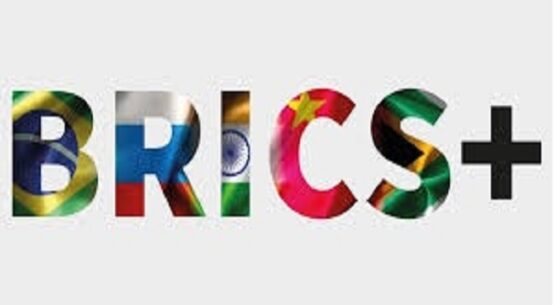
That healthcare is a citizen’s right is known to the government and the people, but perhaps not to the caregivers, i.e. the doctors and the nurses in government hospitals because their manners and attitudes toward the patients suggest something otherwise. Yet, these people forget that they are there to provide public services and their salaries come from the exchequer for that purpose.
The outdoor sections of public hospitals are still the primary destinations of common folks to seek medical attention. In the capital, they mostly rush to Dhaka Medical College Hospital, buy a ticket at Tk10 and patiently wait for doctors who provide outpatient services. A long morning queue, getting somewhat sandwiched between people as everyone struggles to get ahead of others and an unholy competition of who will enter the doctors’ chambers faster than whom are the perennial picture of the country’s oldest tertiary level hospital located at the heart of the capital. What is astonishing to observe is people’s patience — because it so happens that they have to wait for hours to get their turn — and their acceptance of the physician’s advice religiously. But how public-friendly is the public hospital is today’s topic to shed light on. Most patients complain of the doctors’ neglect of listening to their problems, and of prescribing medicines before they finish explaining their health complications. Again the medicines which the doctors advise are supposed to be given away free of cost to the patients, but it would be a matter of luck if those are available at the medicine corner.
The hospital generally should have hygienic atmosphere, but in this regard not only the Dhaka Medical College, but also all public hospitals across the country won’t withstand test for sure, and they throw up a different picture. A word is always on the tip of everyone’s tongue that if any healthy persons go to public hospitals as patients’ attendant, particularly in the Dhaka Medical College Hospital, they would fall ill — something that clearly refers to the filthy atmosphere of the infirmary packed with patients, some of whom are lucky enough to find bed in the hospital ward, while some are seen lying on the floor in the hallways, and wait for a bed till it gets empty. The patients lying on the floor are left to the mercy of the nurses. If fortune favors, they would be visited by doctors on their morning rounds, or they would keep groaning all the while.
Those who buy a Tk10 outdoor ticket for seeking treatment in the public health center are economically backward, and are also very humble in background. They do not dare to lodge protest even if they are treated with disrespect by the caregivers in the hospitals. This is a very common culture here for the public hospital staff from doctor to nurse to ward boy that they won’t behave well with patients. There is none to look after this ill treatment. In the outpatient service ward, two doctors usually sit in one room, and they keep gossiping and at the same time listening to their patients and writing medical advices, thanks to their multimodal cognitive capacity.
None can deny that a doctor-patient relationship is the key to a successful treatment of a disease. To patients, a doctor appears before them as the second ‘God’ whom they rely on one hundred per cent. A good behavior of a doctor and his or her empathy for patients are considered half cure of a disease. A whole bunch of tablets, pills, injections and needles are sometimes secondary to just simple empathic words of the physicians to their patients. A pep talk with patients works like white magic that instills in them confidence to come round quickly. This compassion is instrumental on the part of the physicians because theirs have the most virtuous profession that heals the wounds of afflicted individuals.
It is true that the public hospitals are overwhelmed with patients, but the mentality of providing a compassionate healthcare both by doctors and nurses within the existing capacity appears to have ebbed which is alarming. The patients are hardly treated with dignity and empathetically, and a get-rich-quick mentality has come upon the physicians. The public hospitals are a brief sojourn for doctors while they are busy spending time mostly in private hospitals and in their private chambers where they are flush with cash.
There is also moral degradation on the part of physicians. In Dhaka Medical College Hospital, allegations have it that some unscrupulous doctors through their agents ask patients to privately see them during office hours in exchange of fees. If such is the case, then where will the downtrodden people go? With no enough money to spend on medical issues, public hospitals are the last resort of the destitute people. As they are hard up, they dare not go to private healthcare centers, nor even do they have capacity to see specialist doctors at their private clinics. But it is their constitutional right to avail health services from public institutions free of cost while at the same time the physicians should be true to their great services they are revered for. The concept of smart Bangladesh will only hold water if there is an improvement in all services sector including the health sector. Therefore, an overhauling of health system is not just the order of the day; it is an absolute necessity when it comes to providing universal healthcare, which might be a laudable goal, but which is not impossible if endemic corruption can be checked.
Ours is a country that has made many impossible things possible apart from achieving success in preventing cholera, diarrhea, malaria, black fever, extended program of immunization, and most recently the Covid-19, but has lagged behind the global universal healthcare index. According to the World Bank data, Bangladesh scored 51 whereas Nepal 53, India 61, Bhutan 62, Sri Lanka 67 and the Maldives 69 in the universal healthcare service coverage index.
The basic principle of universal health coverage is to ensure quality health services for all people either free of cost or at low cost, but many policymakers appear to have no clear idea of this issue.
Some opine that providing public health services against a Tk10 medical ticket is enough, but it is beyond their cognizance that a mere Tk10 cannot fetch everybody all medical benefits when required, because they did not have to queue up to seek such medical services as did the common people, nor did they ever feel what it was like to get treatment like the grass roots.
The government in a recent report said per capita healthcare expenditure in Bangladesh went up by nearly 60 per cent from Tk 2,862 in 2015 to Tk 4,578 in 2020.
To meet the universal health coverage target by 2030, this expenditure has to be brought down to 30 per cent. The task is daunting, but not impossible. For this requires firm political resolution, effective strategy and perfect leadership in health sector.
The writer is a senior journalist at New Age

